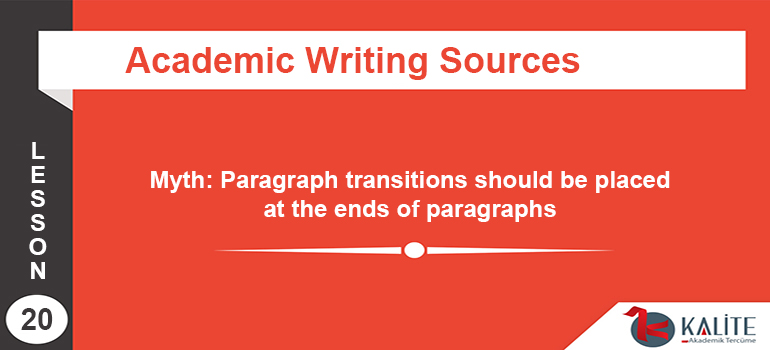
Myth: Paragraph transitions should be placed at the ends of paragraphs
We might guess that this common misconception comes from a desire for students to be forward-looking. As such, we can hazard a guess that the rule, “paragraph transitions should always happen at the ends of paragraphs,” is a provisional one taught when students are introduced to essay structure.
This desire for students to be forward-looking is well founded, since good writers constantly anticipate where and how they will move their discussion as their texts progress.
This rule presents a two-fold problem, however. The first problematic aspect of the rule is that, even if we grant that transitions can be placed at the ends of paragraphs, there’s no reason to suppose that’s the only place they can appear or that’s where they usually belong.
In fact, moving on to the second problematic aspect of the rule, paragraph transitions are often best placed at the beginnings of paragraphs, not the ends. The reasons the beginning-placement presents a more appropriate position are that paragraphs convey one unified idea and that transitions usually appear in (or as) sentences emphasizing new ideas.
In other words, a transition usually mentions an old idea but focuses on a new one, and this new idea will often be the focus of the new paragraph. Since the new paragraph shares the emphasis of the transition, the beginning of the new paragraph is usually the most appropriate place for the transition.
This article is part of Writing myths: The reasons we get bad advice.


